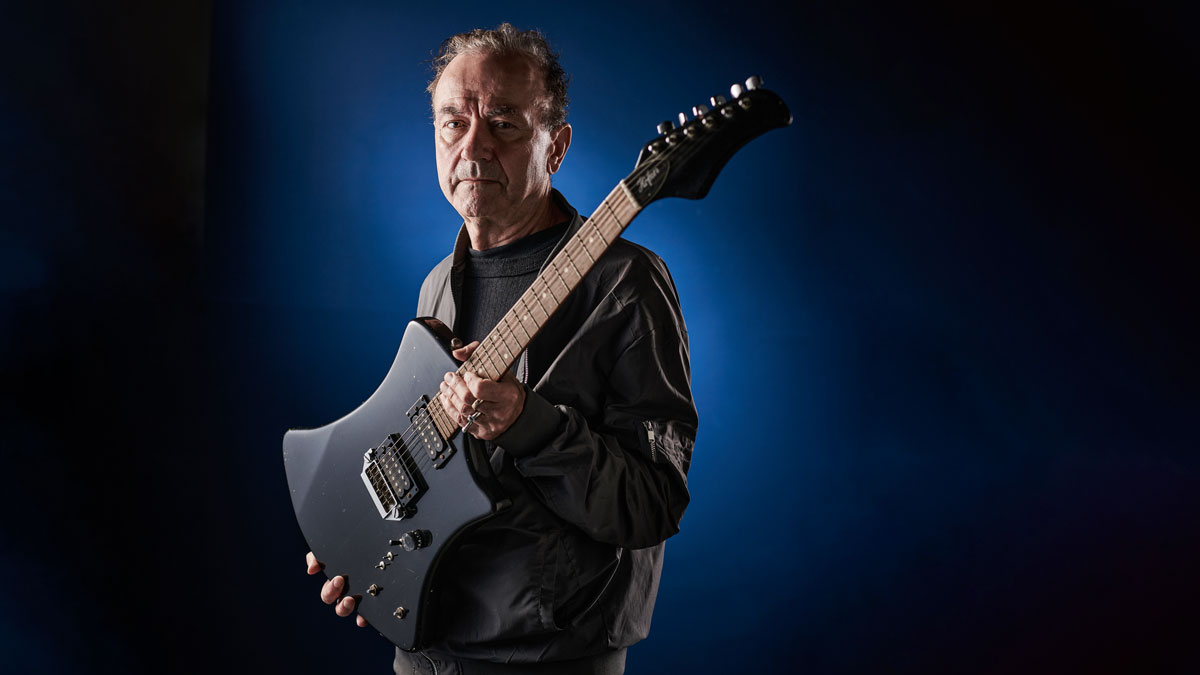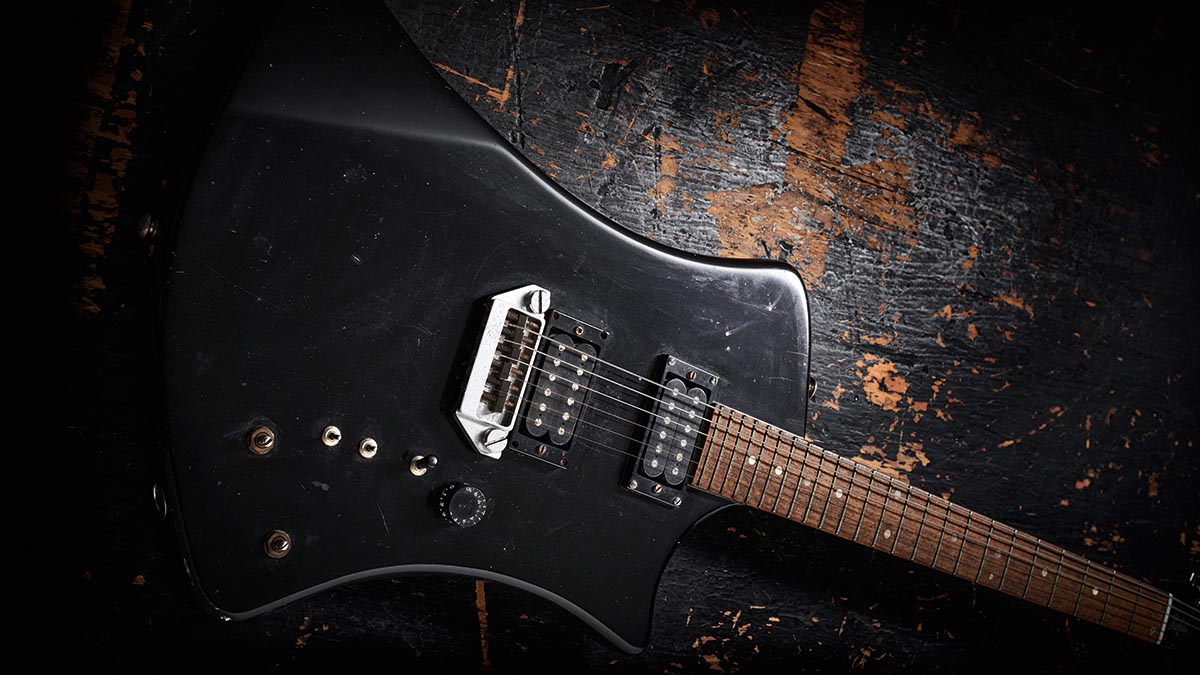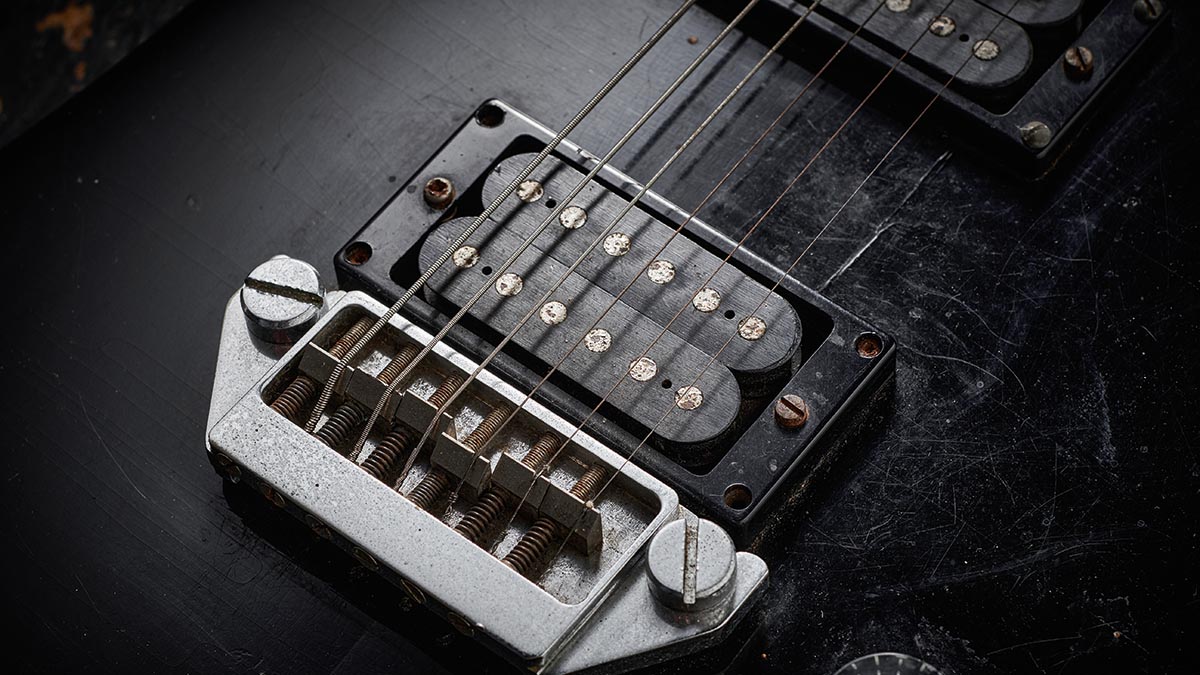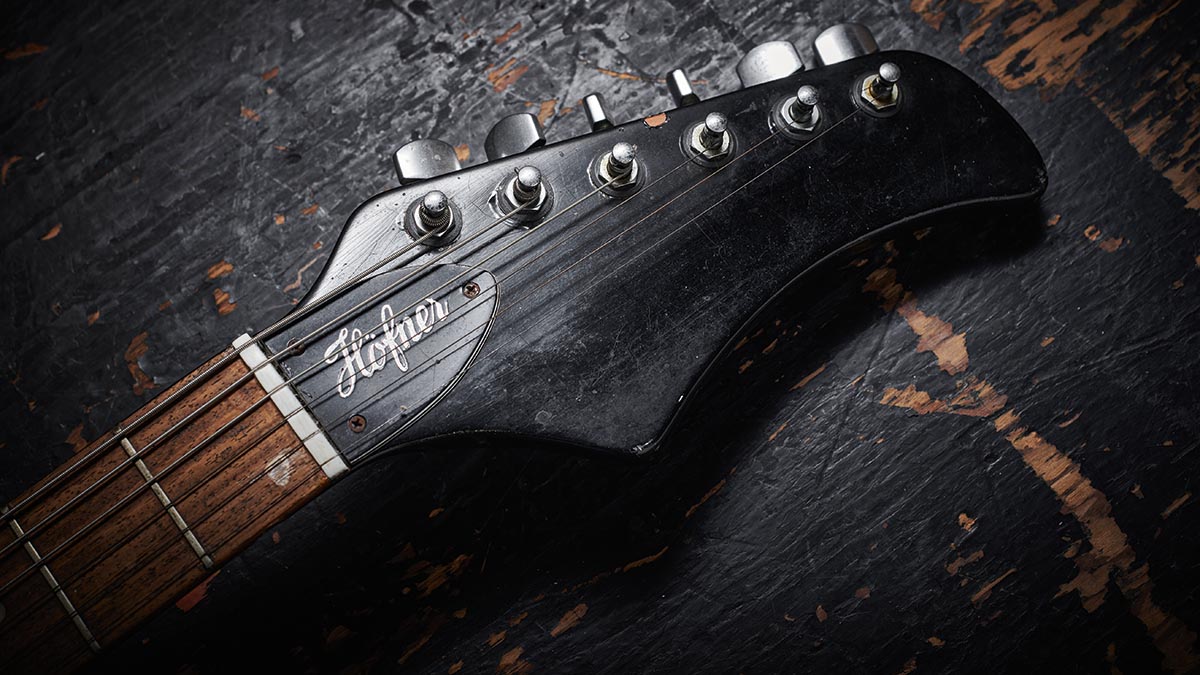The strange history of Hugh Cornwell’s Höfner S7L – the ‘Razorwood’ electric guitar made famous by The Stranglers
How a little known and short-lived guitar from Höfner found its way into the hands of The Stranglers’ Hugh Cornwell around the time of the band’s hit Golden Brown

If you happened to be watching The Stranglers performing Golden Brown on BBC’s Top of the Pops in the early 1980s, you may have found yourself wondering about the strange-looking electric guitar that singer Hugh Cornwell was holding.
None more black in colour, of course, but with a strange blade-like body shape with a Fender-ish headstock, it wasn’t immediately unidentifiable from any sources we have to hand. But when we ran into Hugh last year, we were able to ascertain that the guitar was a Höfner and so we contacted Steve Russell, a Höfner historian, who identified the guitar as an S7L, a highly unusual model that was only available between 1978 and 1984.
It was known as the ‘Razorwood’ because of its body shape and featured an interesting set of parts, along with a fascinating backstory – and Hugh’s tale of how one of his pair of S7Ls went missing and was subsequently recovered is a bit of a page‑turner, too.
“The Höfner company was initially an orchestral instrument maker – violins, cellos, and so on – from the 19th century onwards, based in a place called Schönbach in Bohemia, now the Czech Republic,” Steve Russell begins. “In the late 1920s and ’30s they diversified into acoustic guitar making, first flat-top guitars and then archtops with a Gibson influence.

During the ’70s Höfner continued producing what were essentially amateur to semi-pro models, adding ‘new’ designs based upon Fender and Gibson models in order to keep in step with the copies coming from Eastern Asia.
Steve continues: “At the end of the 1970s, Höfner appears to have made the decision to drop their previous solid models and produce solid guitars of a higher, more professional level and the S7L was one of several models resulting from that policy decision. Other models included the S2, S3, S5, S9, S10 and the S11, many using active electrical circuits, although the S7L was passive.

Höfner’s 1978 catalogue contains an explanation of the switching system on the S7L and the company’s Multisound and Acoustic Filter circuits. When Steve saw a picture of Hugh’s guitar, he commented: “The guitar shown in the catalogue is an early version with the Multisound switches located on the top bout. Hugh’s guitar has those switches located adjacent to the rotary volume, tone and Acoustic Filter controls beneath the bridge.
Get The Pick Newsletter
All the latest guitar news, interviews, lessons, reviews, deals and more, direct to your inbox!
“However, as it has the less-pronounced cutaway horn, I would guess that it dates from the 1978/’79 period. The S7L was designed for Höfner by Gela Hildebrandt, a professional guitarist in Germany who seems to have been employed specifically to update Höfner’s guitar products.
“He was also involved in the Höfner Attila Zoller jazz archtop model. Christian Benker, Höfner’s CEO at the time, was present at the 1978 Frankfurt Trade Fair where the S7L was first introduced. Barratts Of Manchester were the UK distributor for Höfner in the late 1970s/early 1980s and their 1982 price list clearly gives the S7L their own product name, the ‘Razorwood.’”
A couple of years after production of the S7L began, Höfner contacted Hugh Cornwell of The Stranglers. At the time the band had charted with singles such as Peaches, Nice ’N’ Sleazy and No More Heroes and were just about to embark on the writing sessions for the La Folie album.
“It was after we’d done [(The Gospel According To) The] Men In Black album,” Hugh remembers. “We were approached by Höfner and they said, ‘We’ve got this interesting guitar, we’d like you to check it out.’ We were writing and preparing new material for the album La Folie and they turned up with these two guitars that were quite different looking.
“There was one buff brown one and one solid black one. Of course, I went with the black one because it looked more like the business to me. I liked the shape and I said, ‘Have you got a name for it?’ And they said they didn’t. So I called it ‘The Razor’ because of the shape of it.”
In 1986, Höfner seems to have realised that the guitar-buying public was struggling to keep up with all the above S models, and they replaced the lot with just one model, the Höfner Alpha. This was a top-quality instrument using passive circuits and fitted with a Floyd Rose type vibrato tailpiece and was produced between 1986 and 1989.
The S7 models first saw the light of day back in 1978 and were available in several different orientations.
“Three S7 model versions were produced between 1978 and 1984,” Steve confirms. “A conventional six-string 24 ¾-inch scale version called the S7L, a 12-string version S7/12 and a bass version S7B.”

Whether Hugh’s pet name for his new guitar influenced it becoming known as the ‘Razorwood’ is lost to history, but it’s evident that the instrument was used extensively on the next Stranglers release.
“I used it when we were preparing the material for the La Folie album, which, of course, has got Golden Brown on it, and there’s a lot of arpeggio work on that album and I could only do that because those guitars have got two-octave necks. So I was able to get right up to those top notes and in perfect pitch.
“I mean, they don’t go out [of tune] at all on those top frets, which is amazing. So I was really excited about that guitar because I could go up higher and I was really enjoying it. I came up with some interesting little bits of guitar.”
Hugh went on to use the S7L when The Stranglers went on tour in support of their La Folie album. On the tour Hugh used the black Razorwood with the brown one close at hand as a spare and, of course, it’s the black one that can be seen on the Top Of The Pops recording.
But despite Hugh giving good feedback about the guitar to Höfner, the guitar’s production lasted another two years or so before being dropped from the catalogue. It’s here that the story of the brown Razorwood gets even more intriguing.
“The brown one never really got used,” says Hugh. “It was always there as a spare, but I really liked playing the black one. Then I left the band and I retained the black one, the Golden Brown one, but the other one mysteriously disappeared. I believe it got adopted by one of the road crew at that time.
“It ended up in a collection and I was alerted when it came on up for sale. The guy who had the collection had died and his wife was trying to get some funds together and so she was selling his guitar collection. I went around to see her and gave her the story and she was mortified.
“She wanted me to take it back immediately, but I said no. I could see the dire straits she was in so I wanted to give her something for it, you know? But she wouldn’t take anything for the guitar. But she said, ‘If you want to, I work for a charity, why don’t you make a donation to the charity?’ Which I did. So instead of giving her the money I donated to her charity. And that was that. So I’ve now got both of them back again.”
- Guitarist would like to thank Steve Russell for his historical input to this article and Hugh Cornwell for allowing us to photograph his rare Höfner.
With over 30 years’ experience writing for guitar magazines, including at one time occupying the role of editor for Guitarist and Guitar Techniques, David is also the best-selling author of a number of guitar books for Sanctuary Publishing, Music Sales, Mel Bay and Hal Leonard. As a player he has performed with blues sax legend Dick Heckstall-Smith, played rock ’n’ roll in Marty Wilde’s band, duetted with Martin Taylor and taken part in charity gigs backing Gary Moore, Bernie Marsden and Robbie McIntosh, among others. An avid composer of acoustic guitar instrumentals, he has released two acclaimed albums, Nocturnal and Arboretum.
“It combines unique aesthetics with modern playability and impressive tone, creating a Firebird unlike any I’ve had the pleasure of playing before”: Gibson Firebird Platypus review
“This would make for the perfect first guitar for any style of player whether they’re trying to imitate John Mayer or John Petrucci”: Mooer MSC10 Pro review










